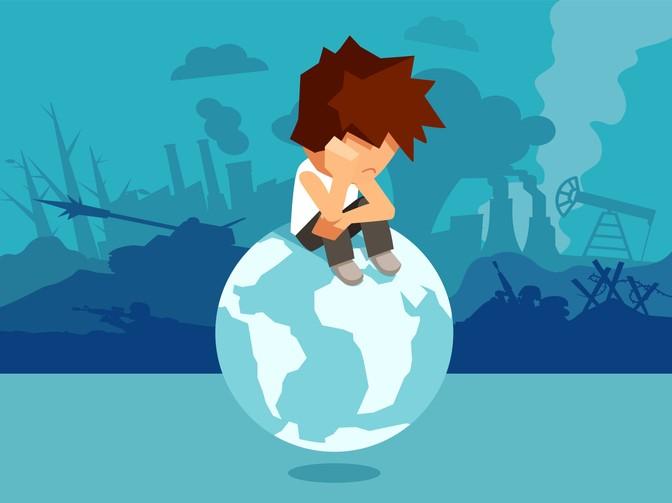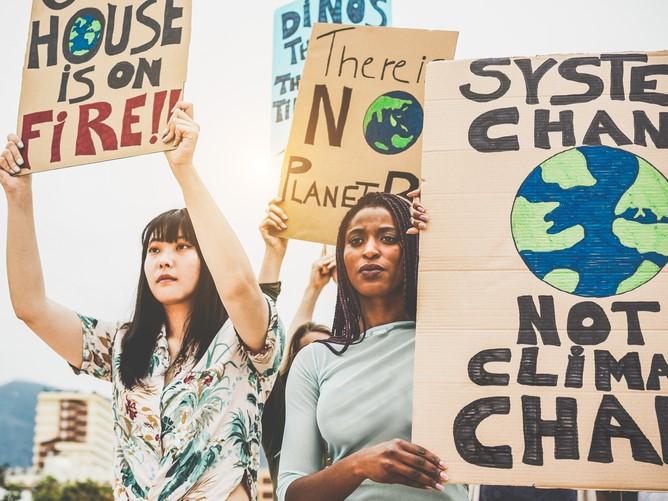When examining personal impact on climate change, some students claim that their contribution is not as critical as, say, that of big oil corporations. While this is obviously correct, it shouldn’t be used as a reason for them to not change their habits. So how can we, as teachers, motivate them to take individual action? Below are some ideas that might help to push our students towards tackling the sustainability crisis.
Embrace eco-anxiety
It is extraordinarily difficult to teach about climate change and sustainability during what has been roundly described as the “decisive decade”. However, a study published in Lancet Planetary Health, which surveyed 10,000 young people (16- to 25-year-olds) across 10 countries about their fears about the climate crisis, might provide an in. The study found that 50 per cent of the surveyed young people reported feeling afraid, sad, anxious, angry, powerless, helpless and guilty; they also reported feelings of betrayal regarding government (in)action. In fact, 56 per cent of surveyed students think humanity is doomed. As such, perhaps utilising and embracing this eco-anxiety is a means through which we can get young people to engage.
Of course, we must be careful how we approach such topics so as not to exacerbate eco-anxiety, which can present as a negation of the crisis, depression, indifference, dismissiveness and more. Therefore, I believe it’s vital that we help students to embrace and accept their emotions.
- Building futures: how estates directors can deliver net zero
- The sector’s role in addressing climate change is crucial – and varied
- Education for humanity: designing learner-centric solutions for refugee students
For instance, I’ve asked them to create images that represent their feelings after they hear for the first time about the current state of affairs on climate change topics. Afterwards, I might ask them – using games such as Minecraft – to create the kind of society they would like to live in, where climate change is not a problem. Teaching students about concepts worth striving for – such as radical hope or solarpunk – can prompt them to think of solutions to problems rather than feeling indifference or helplessness.
Last, I will ask them about their individual feelings before moving on to group discussions – including teachers – in which we talk about how we feel. By having students own and recognise their emotions, they can begin to have more control over their eco-anxiety. And what’s even better about all these exercises is that they work both online and face to face.
Critical and systemic thinking based on eco-anxiety
Further important elements of this equation have to do with critical and systemic thinking about climate change. A study by Ecopsychology analysed the relationship between climate change denial and exposure to the effects of climate change. It found that eco-anxiety was lower in those with both high and low levels of exposure to natural disasters. The authors argue that “this psychological defense mechanism can partly explain why many people are reluctant to fight against climate change even in countries that are threatened by it”.
Denying reality to cope with the truth of it, while perhaps understandable, is not beneficial. Rather, we must teach our students how climate change denial is real and help them to identify it. There are even some ways to make this fun. I like to use the Cranky Uncle app, which was created by Monash University scientist John Cook and uses cartoons and critical thinking to fight misinformation, with my students and have them compete with each other on it.
Finally, eco-anxiety levels might also benefit from thinking systematically. Feeling anguish about an abstract problem while not seeing the complete picture can be quite distressing. Encouraging students to think about climate change systematically, however, can help them to understand the different layers and their connection to stakeholders and impacts. Ultimately, if we help students understand and embrace the complexity of this issue, their feelings of “humanity is doomed” might turn into “I have an idea that could help with this part of the problem”.
As we’ve seen, eco-anxiety appears partly because that is how societies cope with a reality that appears too hard for them to accept. Emotions do play a role in how we understand a problem, and it’s our responsibility as teachers to help students embrace their eco-anxiety so their actions are based on critical and systemic thinking.
Luis Gerardo Rojas Solorio is an associate professor of ethics, sustainability and social responsibility at Monterrey Institute of Technology, Mexico.
If you found this interesting and want advice and insight from academics and university staff delivered direct to your inbox each week, sign up for the THE Campus newsletter.




comment